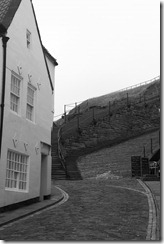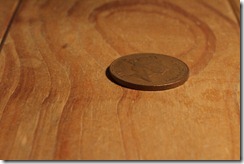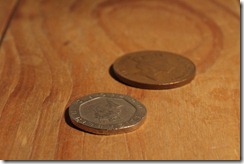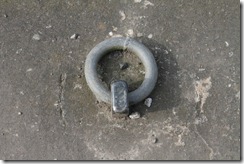Exercise: Horizontal and vertical lines
For this exercise I had to take 4 images of a horizontal line, and 4 of vertical lines. Where possible I had to try to avoid repeating the way a line appears so I was very careful to try and get variety within my compositions.
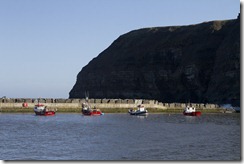
This first image shows the horizon in two different ways, the four boats all on the same level makes a horizontal line, while this is emphasised by the stone pier behind them again breaking the image into clearly divided areas. I’f i’d included more sky or altered the composition slightly then this would also have been working to the rule of thirds.

I like this image and the car fills the frame horizontally but also is reinforced with the focus on the line decoration on the car. A close crop in really helps to distract the eye from the car as a whole and just draws it to the horizontal lines.

This third image is quite a simple one, I chose the pier supports because I find the eye is drawn into the image at the horizontal line more than the two verticals. I converted this to black and white just for sheer aesthetics as I felt it looked better.

I really like this last image as I find that it has three lots of horizontal lines which draws the eye in and across the image. The top lines on the boat, at the bottom of the boat and through its reflection, and then the strip of water is also horizontal. Again I just converted this to black and white as due to the lighting, it was quite close to monochrome itself.
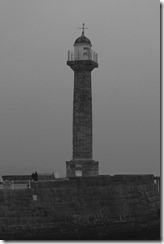
This is an easy image to capture as the subject matter of a lighthouse really emphasises the vertical aspect and draws the eye in and up.
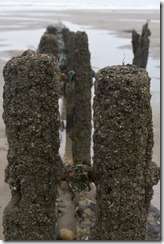
For the next image, I took a close up image of old pier struts and as they are all vertical, you look at the front subject, then the eye slowly moves back to the other subjects. A close crop ensures that there is no distraction for the eye and viewer.

Vertical lines are enhanced in this image due to the buildings, the drainpipe and alleyway leading you in. A conversion to black and white removes some of the distraction of the background in the alley that it had when in colour.
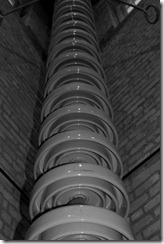
This is my favourite image, part of a pylon in a museum. I didn’t do any processing or cropping apart from changing it black and white. Not only does the vertical line draw you in but the not very obvious subject also captures the eye.



